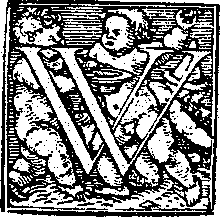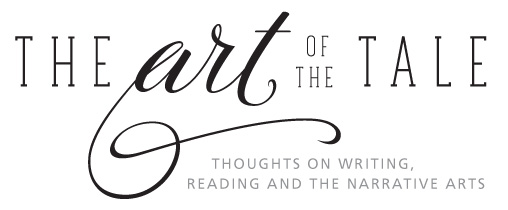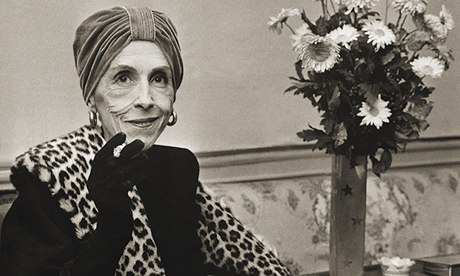 hen Ernest Hemingway learned in 1954 that he had won the Nobel Prize for Literature, he remarked that he would have been happier if it had gone to “that beautiful writer, Isak Dinesen.”
hen Ernest Hemingway learned in 1954 that he had won the Nobel Prize for Literature, he remarked that he would have been happier if it had gone to “that beautiful writer, Isak Dinesen.”
It was an interesting endorsement of a writer who was his opposite in so many ways. Hemingway was the champion of economical style and masculine settings. Dinesen – whose real name was Karen Blixen – wrote elaborate tales set in the past. Dinesen’s world revolved around an aristocratic milieu that had disappeared after WWI, and she was often criticized for her attachment to it, just as she was criticized for choosing to focus on mere “tales,” as opposed to writing novels of social realism.
What did Dinesen think of Hemingway’s mention of her? On Danish television, she said that his words had meant more than two Nobel prizes, except for the money. She’d hoped to win, certainly, but perhaps she appreciated the award going to a fellow artist who liked making a myth of his own life.
Today, Dinesen is considered one of the greatest writers of the 20th Century, but she’s also one of the most ignored. This was not always the case. Her books were once featured selections in the Book of the Month Club. Cheap paperback editions were shipped overseas to American soldiers during WWII. While on tour in the U.S., a few years before her death in 1962, the author packed auditoriums and hobnobbed with the likes of Marilyn Monroe. And the Nobel Committee did nominate her for the award twice.
There was a brief resurgence of interest in her work during the 1980s, when Meryl Streep played her character in the film Out of Africa. Based very loosely on Dinesen’s memoir about her years as a coffee grower in British East Africa, the movie also starred Robert Redford, and for a time inspired a mania for British Colonial decorating and safari tourism (the Kenya Tourism Board considers it the best free advertising they ever received). Yet while new editions of the memoir sold well, the film did little to boost the profile of Dinesen’s tales, which constitute the majority of her literary output.
It’s not my intention in this post to go into a biography of Isak Dinesen. A good portrait of her has appeared online here, and those curious to learn more are encouraged to check out Judith Thurman’s Isak Dinesen: The Life of a Storyteller, and an excellent account of Dinesen’s early years, Out of Isak Dinesen in Africa, by Linda Donelson.
What I’d like to ponder a bit is Dinesen’s thoughts on tale-writing – on being a storyteller, which is what she considered herself. In fact, she went to some pains to explain what this meant. During a 1957 interview she said: “I am not a novelist, really not even a writer; I am a storyteller . . . To me, the explanation of life seems to be its melody, its pattern. And I feel in life such an infinite, truly inconceivable fantasy.”
Its melody, its pattern. Dinesen was fascinated by the grand view, the idea of Fate or the gods being the real players in life. She stepped back from the worlds she created and saw the larger picture; she was far less interested in her characters as fully-drawn individuals. This is an approach that suits tale-telling; it does not really work well in modern fiction.
Probably it’s this aspect of her personality that made her feel so at home in Africa, where storytelling is part of the air they breathe. Up until 1914 she’d been a cherished, but unmarried, daughter in a wealthy bourgeois household with ties to the nobility. She took a gamble marrying a Swedish cousin, Baron Bror von Blixen-Finecke, and moving with him to Africa to grow coffee. The marriage didn’t last (her husband was chronically unfaithful and gave her syphilis), but Karen Blixen stayed on the farm for 17 years, until the Great Depression killed the coffee market.
Out of Africa is a unique memoir in that the author frequently mocks her own sense of herself in that immense, alien landscape. She is surrounded by characters of various races and creeds who are more aware than she of the mysterious forces that govern lives. She is never your typical colonialist, although she clung to her title of “Baroness” and had a firm sense of herself as mediator and guide for the natives on her land. Writer and critic Ngugi wa Thiong’o views her memoir as “one of the most dangerous books ever written about Africa,” because he sees in it inherent white privilege cloaked by an obvious love of the country and its people.
There is some truth to this, yet it doesn’t say all. Karen Blixen, and later, Isak Dinesen, believed that they were part of a great universal story. She had a role to play in Africa, but it was only an apprenticeship for the role she played later, that of storyteller. A storyteller, for her, was serious business. She was not a prophet so much as a commentator, like the ancient female storyteller in one of Dinesen’s last tales, “The Blank Page.” She speaks enigmatically about the mysteries of Life and the human heart.
This quality permeated all of Dinesen’s work. Even Out of Africa doesn’t read like your average memoir. Rather, it’s life spun into a fantastic tale, where supernatural forces coexist with the everyday. The opening line “I had a farm in Africa, at the foot of the Ngong hills . . .” has the invoking nature of a prayer or chant, all round vowels and whispering consonants. While she writes more about some characters than others (for example, her cook, Kamante, appears far more often than her lover, Denys Finch-Hatton), and some of her most memorable characters aren’t even human (the antelope fawn, Lulu), they all seem to carry equal weight. Dinesen knew the power of withholding details in stories – this would, in fact, become the theme of “The Blank Page.” An absence of information about a character or event can speak volumes, if handled the right way.
Dinesen returned to Denmark in 1931 and published her first collection of stories, Seven Gothic Tales in the United States. It was a surprising success, despite the fact that these stories – like all of Dinesen’s – weren’t exactly “easy.” Dinesen’s tales are complex, multi-layered, and frequently have ambiguous endings. She often tells stories within stories. Storytelling often becomes her theme – she was fascinated by its variations and effects, and how different characters approached it.
One of the best examples of this is “The Immortal Story,” which was part of her collection, Anecdotes of Destiny. Here, a wealthy, aging merchant named Mr. Clay, pondering how he has the ability to control the lives of the people around him, decides to set himself a unique challenge. He has heard of a famous tale, known by sailors everywhere, of a young sailor on shore leave who is approached by an elderly gentleman. The sailor is taken to the man’s home and fed a sumptuous meal. He learns that the stranger has a young wife, whom he is unable to impregnate. The sailor is offered money to spend the night with her and do the deed himself.
Mr. Clay’s servant, Elishama, tells him that the story is only a sailor’s fantasy, but the merchant becomes obsessed with the idea of making it happen for real, just once, in one place on earth. He instructs Elishama to set it all up, including finding a suitable girl to play the wife’s part. Once they’re ready, the two men go out searching for their sailor. Of course they find one, sitting alone on a street corner.
“The Immortal Story” was written when Dinesen herself was getting old, and she’d just experienced the failure of her last great (platonic) love affair, with a young Danish poet named Thorkild Bjornvig. By then she’d become a difficult and lonely individual, and her relationship with Bjornvig had nearly killed them both. Dinesen had attempted to control him to a suffocating degree, even encouraging him to have extramarital affairs in order to lessen his wife’s influence. The ploy backfired however, when Bjornvig fell deeply in love with his mistress.
Dinesen’s story echoes some of this irony, as nothing Mr. Clay orchestrates turns out quite the way he intends. The young couple do end up spending the night together – that’s pretty much a foregone conclusion – but they shut the door on the old merchant, so that he’s cut off from the actual events. Instead, after they make love, the boy and girl share their private thoughts, and leave each other with memories that affirm their individual worth.
Although the ancient story comes alive, Mr. Clay can’t control its trajectory, because this story – like all great stories – has a life of its own. And just as it often happens in real writing, the characters go far beyond the original vision of their “author.”
“All sorrows can be borne if you put them into a story or tell a story about them,” Dinesen once famously said. If “The Immortal Story” is indeed a statement on Dinesen’s relationship with Bjornvig, one has to admire her brutal honesty, and her willingness to find a deeper meaning in what happened to her.
Quite aside from that, the tale stands as an example of why she remains one of my favorite authors. Her work is so much more than decorative set pieces, and you get something new out of the stories every time you read them.
“I am periodically accused of being ‘decadent,’” Dinesen remarked in an interview the summer before she died. “That is no doubt true, as I am not interested in social questions, nor in Freudian psychology. But the narrator of One Thousand and One Nights also neglected social questions, and it is also no doubt for that reason that today the Arabs still gather in their public squares to hear her stories. As for me I have one ambition only: to invent stories, very beautiful stories.”
I don’t think it’s a mere coincidence that Ernest Hemingway, who recognized greatness when he encountered it, used that very adjective to describe the storyteller herself.

